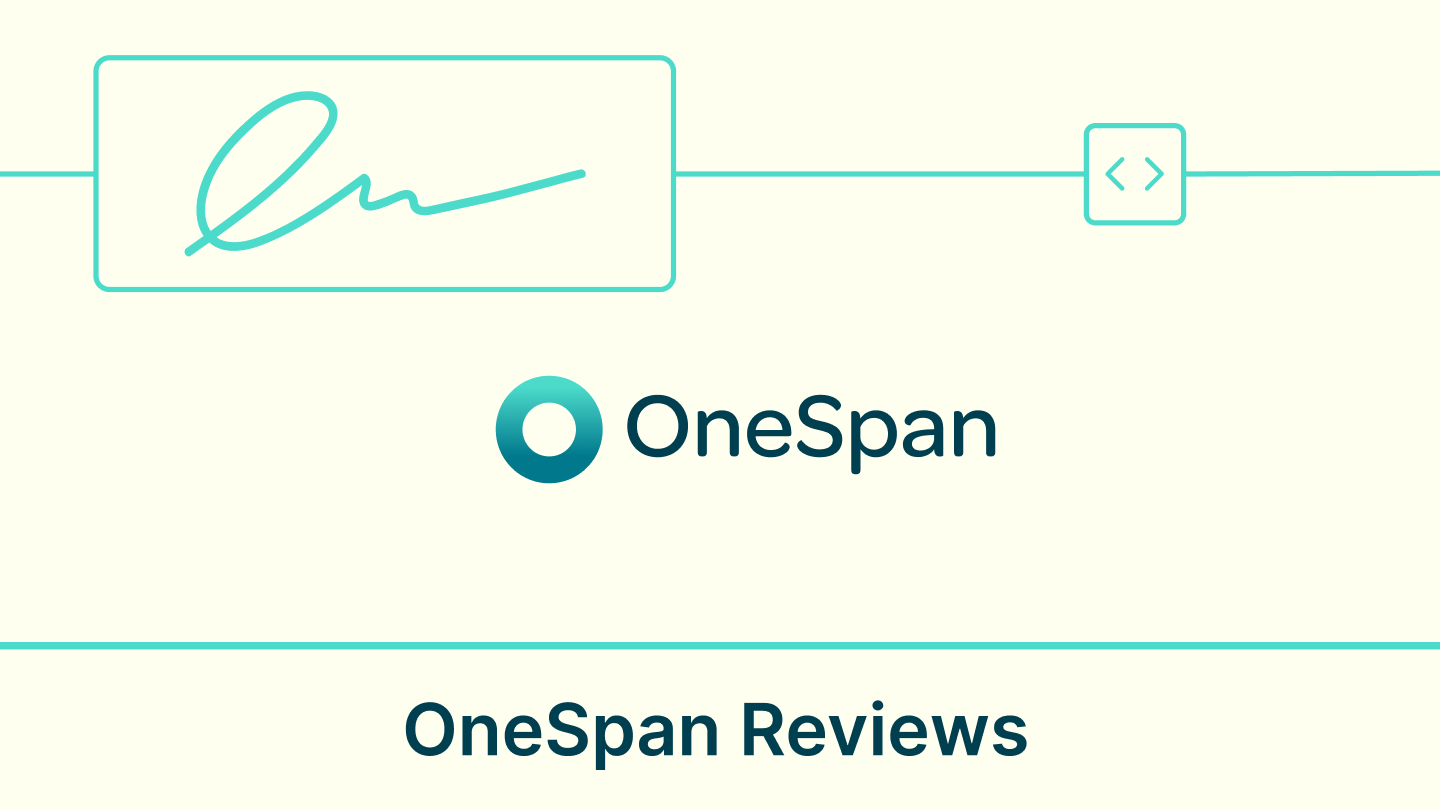Is there a difference between a digital signature and an electronic signature? In the digital era, a signature is moving beyond ‘ink on paper’ and includes any electronic signature possible today.
Many people use electronic and digital interchangeably to describe many business processes. But there are some key differences regarding signatures and specific reasons why you might use one over the other.
Key differences between an electronic signature and digital signature
An electronic signature can be any online signature image drawn, clicked to enter, or a symbol representing consent or approval and verifying a document. So is a digital signature the same as an electronic signature? While the electronic signature is a broader term for any online consent, a digital signature is an electronic fingerprint backed by digital certification for encryption.
What is considered a digital signature? A digital signature is a cryptographic technique used to ensure the authenticity, integrity, and non-repudiation of digital documents or messages. It involves the use of public key infrastructure (PKI) technology to create a unique digital fingerprint of the document or message, which is then encrypted using the private key of the signer. The recipient can verify the signature's authenticity by decrypting the digital fingerprint using the corresponding public key.
Examples of electronic signatures include scanned images of handwritten signatures and click-to-sign features. Modern platforms like Signeasy also offer an online signature generator that helps you create a clean, ready-to-use signature inside the app. Digital signatures are used in email security, to sign PDF online, software distribution, online transactions, and signing legal documents.
An eSignature and a digital signature have many similarities as they have the same function; however, some significant distinctions may impact their usage in different organizations.
1. Legal recognition
According to the ESIGN Act passed in 2000, eSignatures are only valid if both parties plan to sign the document. Additionally, they must agree to conduct business using eSignatures and be able to store and reproduce the eSigned files or contracts. Electronic signatures, however, may only be legally recognized in some countries. The parties in an agreement must check the laws and regulations in the relevant jurisdiction.
Digital signatures use a standard, accepted format called Public Key Infrastructure (PKI) that provides universal acceptance, greater assurance, and validity to signed documents. Regulations such as eIDAS require digital signatures over eSignatures as the former provides authenticity and integrity that can be held up in a court system.
2. Security features
Is a digital signature more secure than an electronic signature? Many eSignature solutions meet essential data protection, security, and compliance standards. They employ secure processes, produce certified final documents, and rely on certification validated by trust service providers (TSA) to validate the electronic signature and enhance its security. But a digital signature is more secure.
Digital signatures use advanced encryption and decryption methods to safeguard the signature. They also rely on the use of public and private keys, which help establish the origin and authenticity of the content.
3. Verification process
eSignatures use verification technologies that can bind the signature to the signer’s identity and verify that the signatures are authentic and secure. Electronic signature verification ensures a positive determination that a signature belongs to and was executed by the signee.
A digital signature is associated with the signee’s information required to prove their identity. The signed document now includes the original and encrypted data as well as a public key and other data to verify the identity. A verifier can then decrypt the files using the key to compare their output with the original data. If both are the same, the verifier knows the document has not been tampered with.
4. Ease of use
An electronic signature is generally designed to be user-friendly and easy to use. It can be as simple as a scanned image of a handwritten signature or a click-to-sign feature. While digital signatures provide stronger security and authentication measures, they also involve additional steps and technical requirements, which can make them slightly more complex to use compared to electronic signatures.
Note: Ease of use may vary depending on the software or platform used. Signeasy has been rated 9.3 for ease of use by G2 users.
5. Compatibility with different file formats
Electronic signature solutions often offer support for a wide range of file formats, allowing users to sign documents in their preferred format. The types of files that support electronic signing include XLS and XLSX, PPT and PPTX, BMP and GIF, JPG and JPEG, PNG, and more.
On the other hand, digital signatures are typically more specific to certain file formats. They are commonly used with PDF files and require the use of specific software or tools that support digital signature functionality. While some digital signature solutions may offer support for other file formats, their compatibility can be more limited compared to electronic signatures.
Advantages of eSignatures
1. Accessibility and convenience: Electronic signatures streamline the signing process, eliminating the need for printing, scanning, and mailing physical documents. It can also be conveniently executed from anywhere, anytime, using various devices such as computers, smartphones, or tablets.
2. Cost-effectiveness: By reducing paper, ink, and postage expenses, eSignatures can significantly lower costs associated with document management and processing.
3. Faster turnaround times: eSignatures enable immediate signing and delivery of documents, eliminating delays caused by physical distance or manual handling. Thus, it ensures time-saving and faster turnaround times.
4. Environment-friendly: By reducing paper usage, eSignatures contribute to a greener and more sustainable approach to document management, benefiting the environment.
Advantages of digital signatures
1. Higher level of security: Digital signatures use cryptographic algorithms to verify the identity of a signer, thus securing the document and preventing unauthorized tampering. It also detects any changes or alterations made after the signing process and invalidates the signature in case of any modification.
2. Compliance with stringent regulations: Digital signatures meet legal and regulatory requirements in most countries, making them legally binding and admissible in courts of law. This ensures the compliance of digital signatures with industry-specific regulations.
3. Advanced authentication methods: To strengthen the security of digital signatures, businesses, and individuals can employ multi-factor authentication techniques, such as using passwords, biometrics, or hardware tokens. Authorized individuals can also use a private key to sign the document.
4. Tamper-evident features: Digital signatures use cryptographic functions to create a unique digital fingerprint of a document, which is encrypted with the private key of a signer. Even a minor change in the document will prompt a difference in the signature, immediately indicating tampering attempts.
Use cases for eSignatures
1. Contract management: eSignatures in contract management facilitate the signing process, enabling efficient and secure execution of contracts. With legal recognition, eSignatures offer convenience, accessibility, and compliance, allowing businesses to manage contracts seamlessly while improving productivity.
2. Human resources: Electronic signatures provide numerous use cases in human resources. They streamline employee onboarding, simplify HR policy acknowledgments, expedite leave requests and benefits enrolment, enhance performance evaluation workflows, and facilitate the documentation of disciplinary actions.
3. Finance and accounting: eSignatures offer significant advantages in the finance and accounting sector. In addition to enabling the efficient signing of financial agreements, contracts, and loan documents, they reduce paperwork and drive approval processes.
4. Sales and marketing: In sales & marketing, eSign enables the quick and secure signing of contracts, proposals, and agreements. They streamline deal closures, accelerate sales cycles, and improve customer experience by eliminating paper-based processes and enabling remote signing capabilities.
Use cases for digital signatures
1. Healthcare: Digital signature in the healthcare industry ensures the integrity and security of sensitive medical documents. It allows the secure signing of electronic health records, consent forms, and prescriptions, enhancing data privacy and compliance with regulations while improving efficiency in healthcare workflows.
2. Government and public sector: The use of digital signatures in the government and public sector provides secure and tamper-evident authentication of official documents, contracts, and agreements. Features such as secure online transactions, efficient paperless processes, and enhanced data integrity of such signatures are working to the advantage of this sector.
3. Legal and compliance: Digital signatures are widely used in the legal and compliance fields to ensure the authenticity and integrity of legal documents, contracts, and agreements. They provide a legally recognized and tamper-proof method of signing, facilitating compliance with regulations and streamlining document management processes.
Choosing the right signature solution for your business
When deciding between eSignature and digital signatures, it is important to assess the specific legal and regulatory framework applicable to your industry and region to ensure that both eSign and digital signatures meet the necessary compliance standards. The level of security and authentication provided by each option should also be evaluated.
A few other factors to consider include:
- Type of documents and use cases
- User experience and convenience
- Cost and scalability
- Acceptance and interoperability
For many businesses, the simplest and most compliant choice for day-to-day operations is a robust online document signing solution. Evaluating reputable digital signature providers can help ensure you choose a platform that meets your security, compliance, and workflow needs. Moreover, the decision should be based on the specific requirement of your organization and the intended use of each signature.











